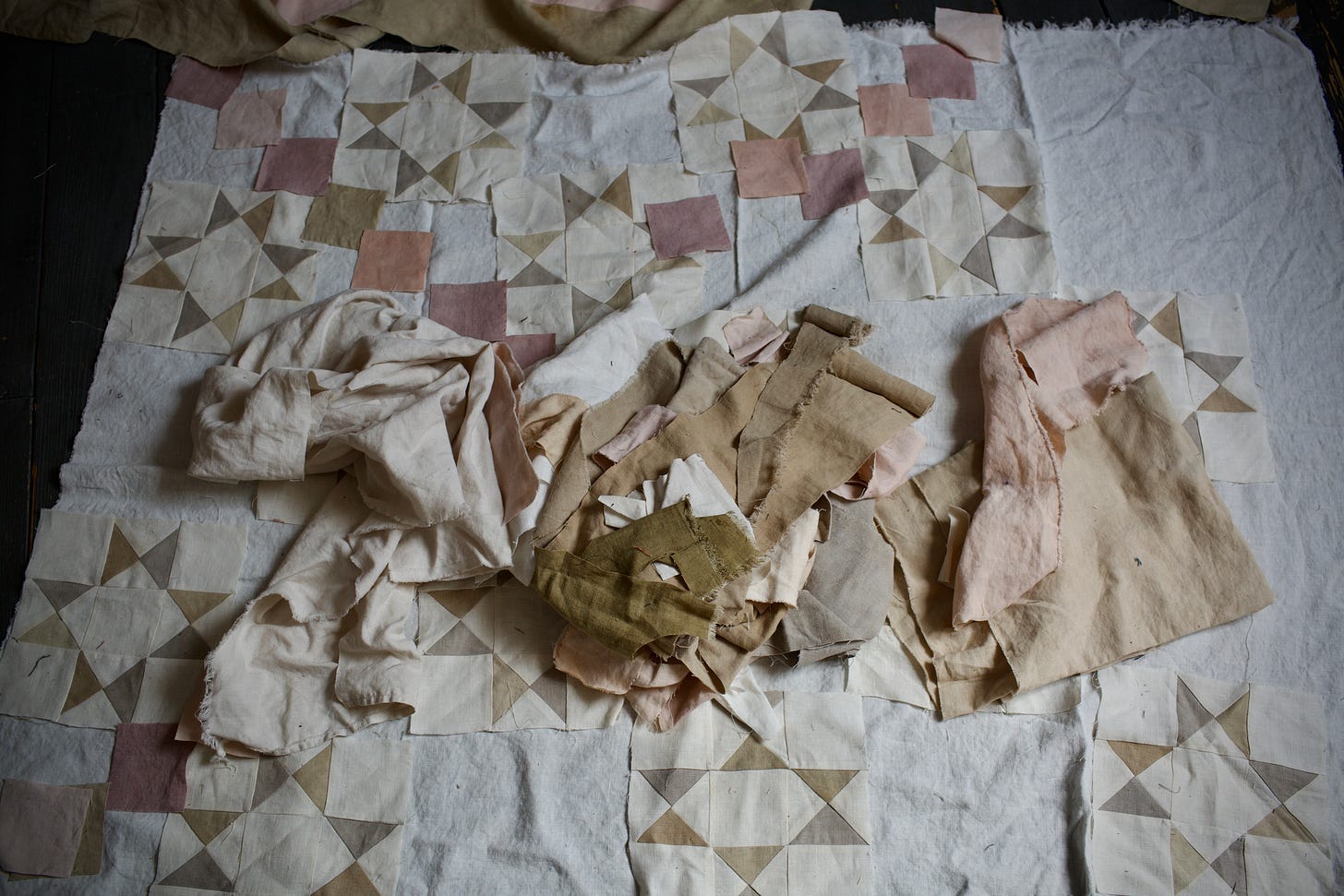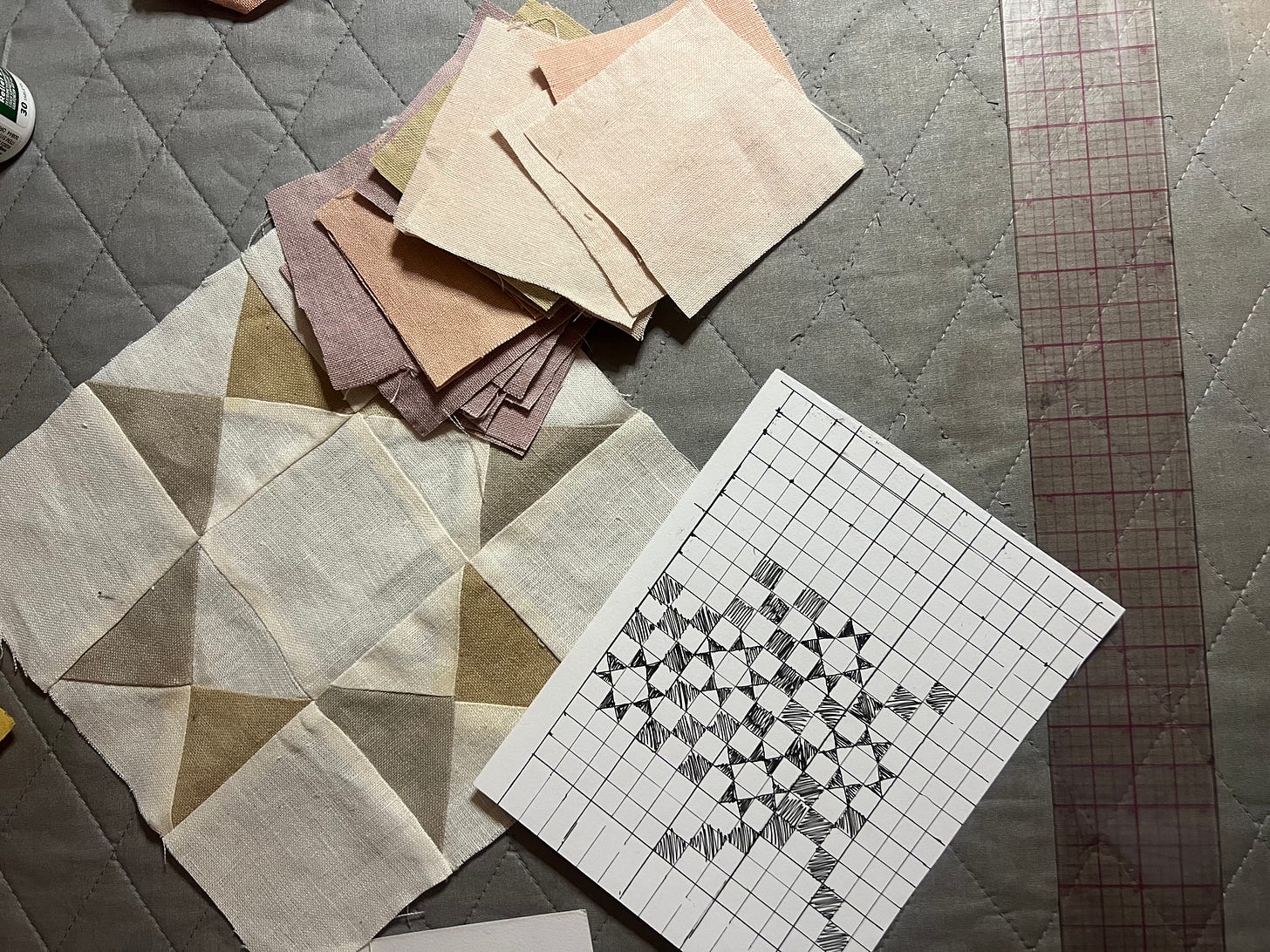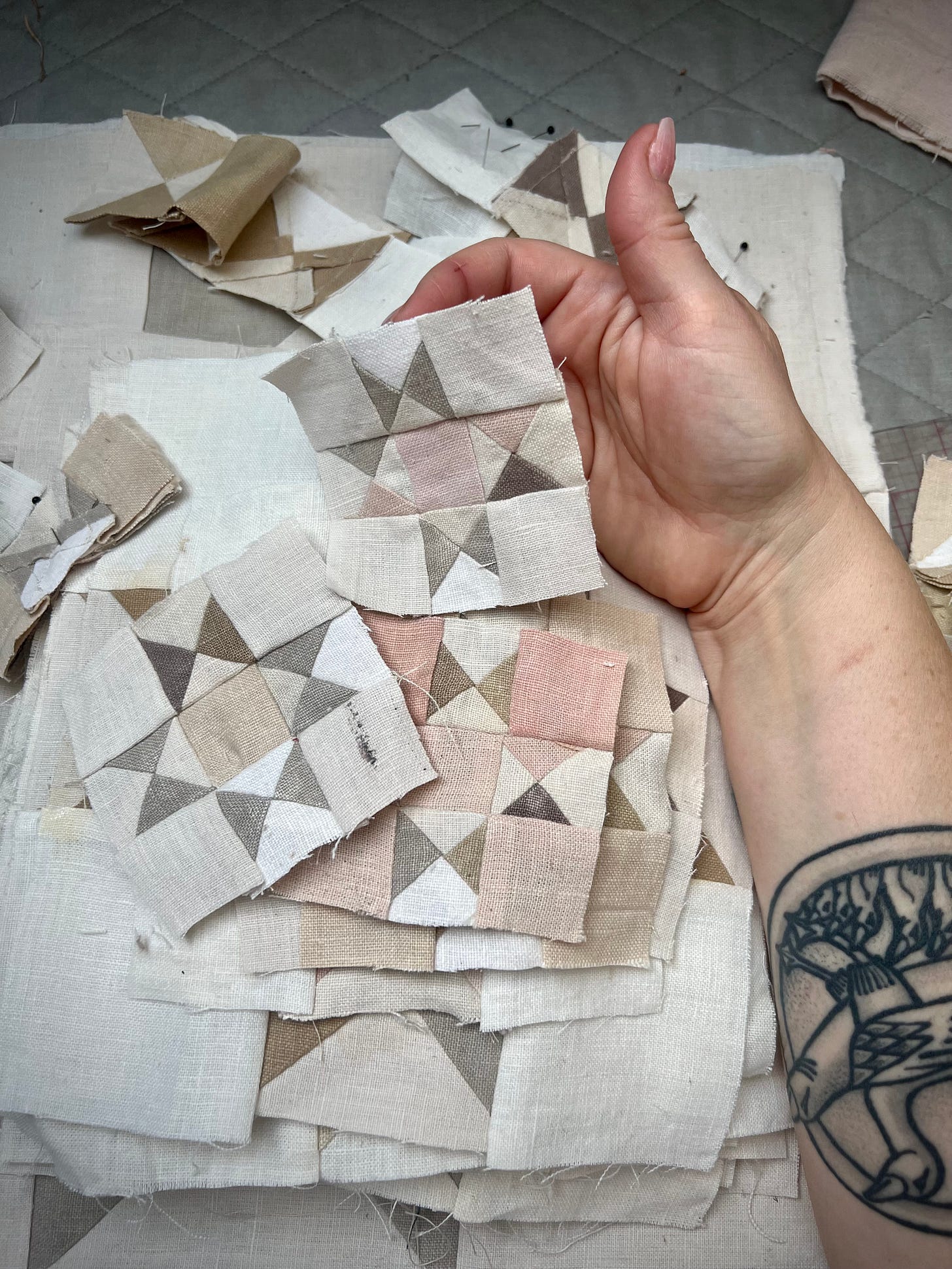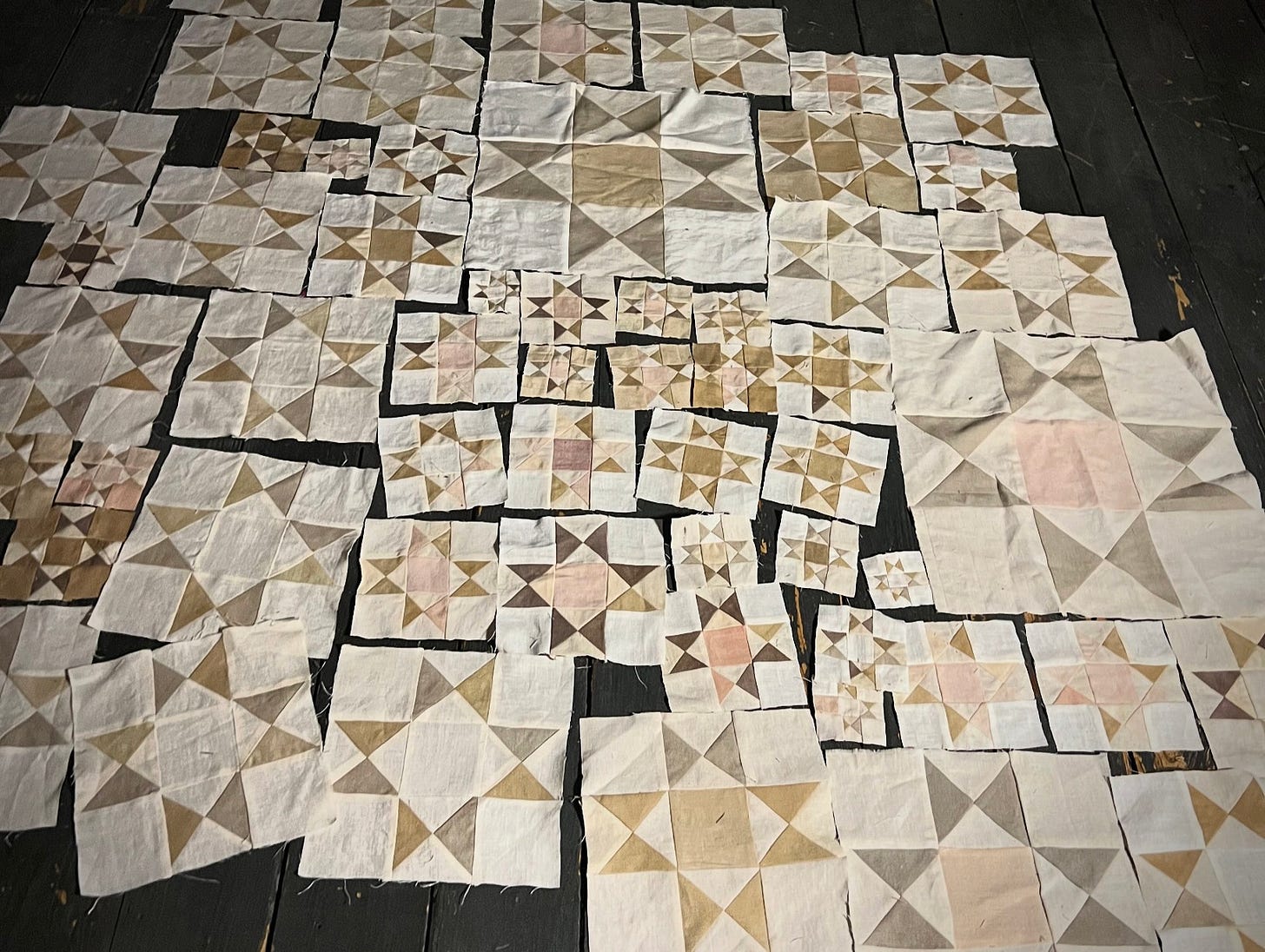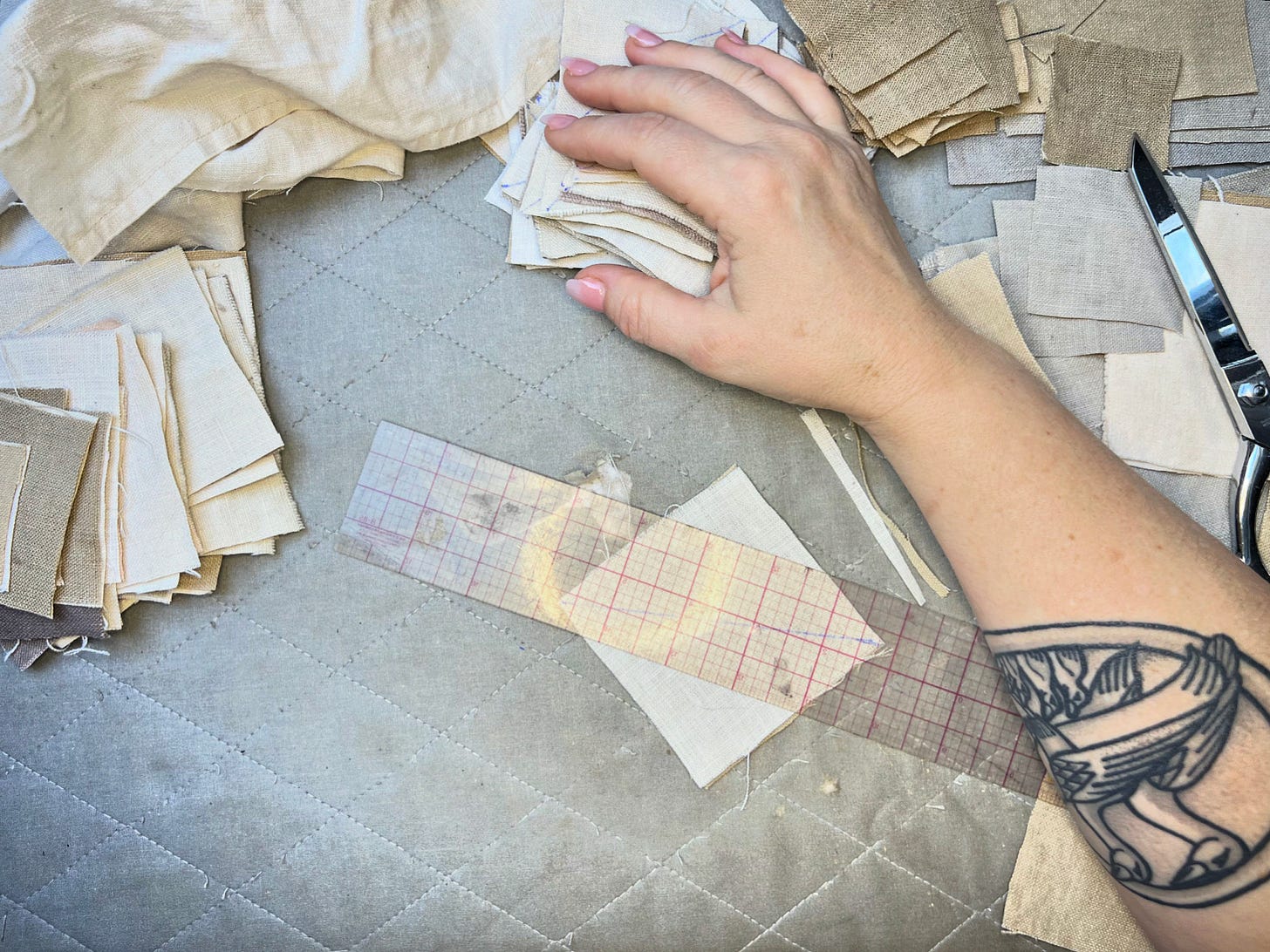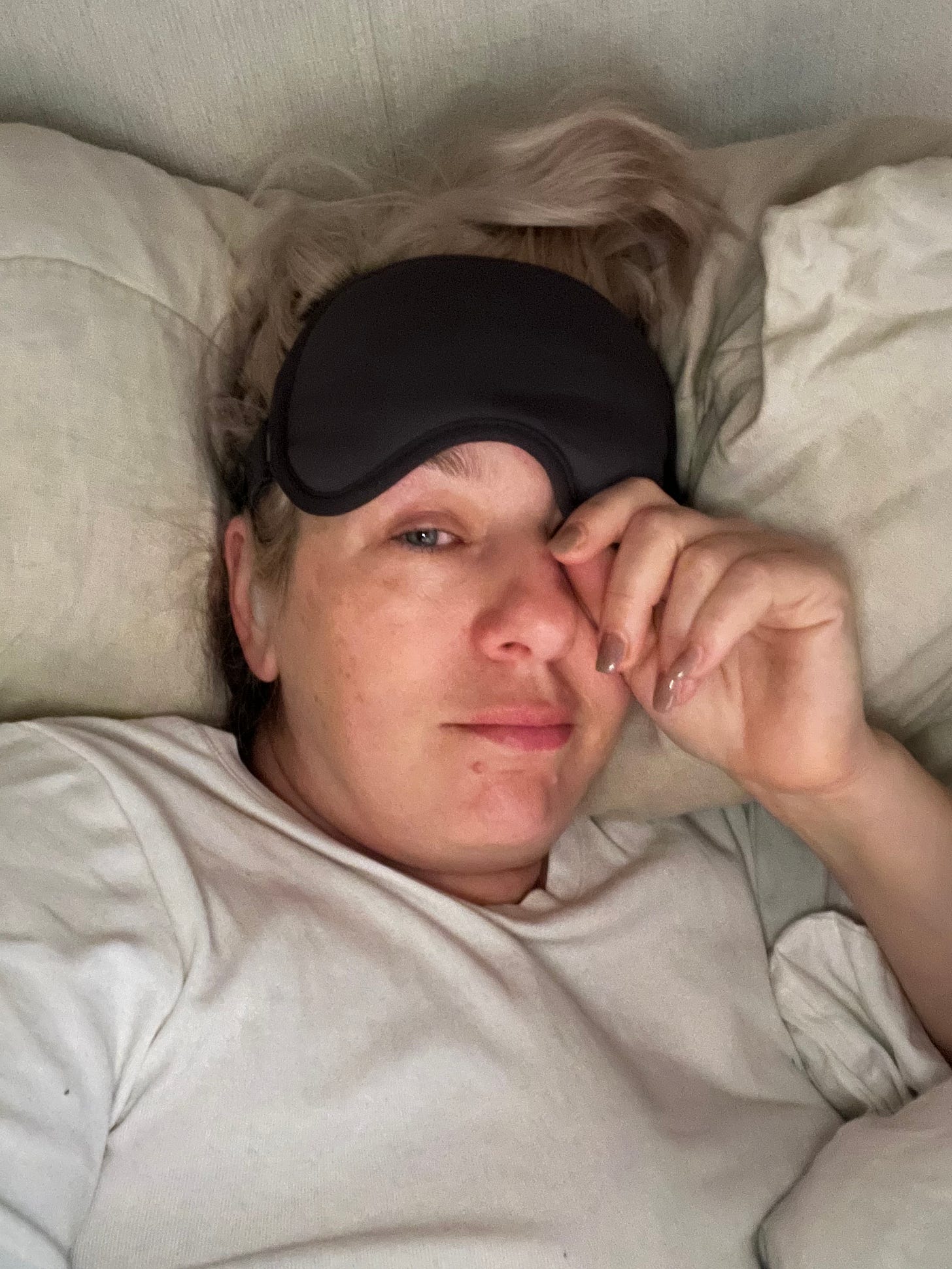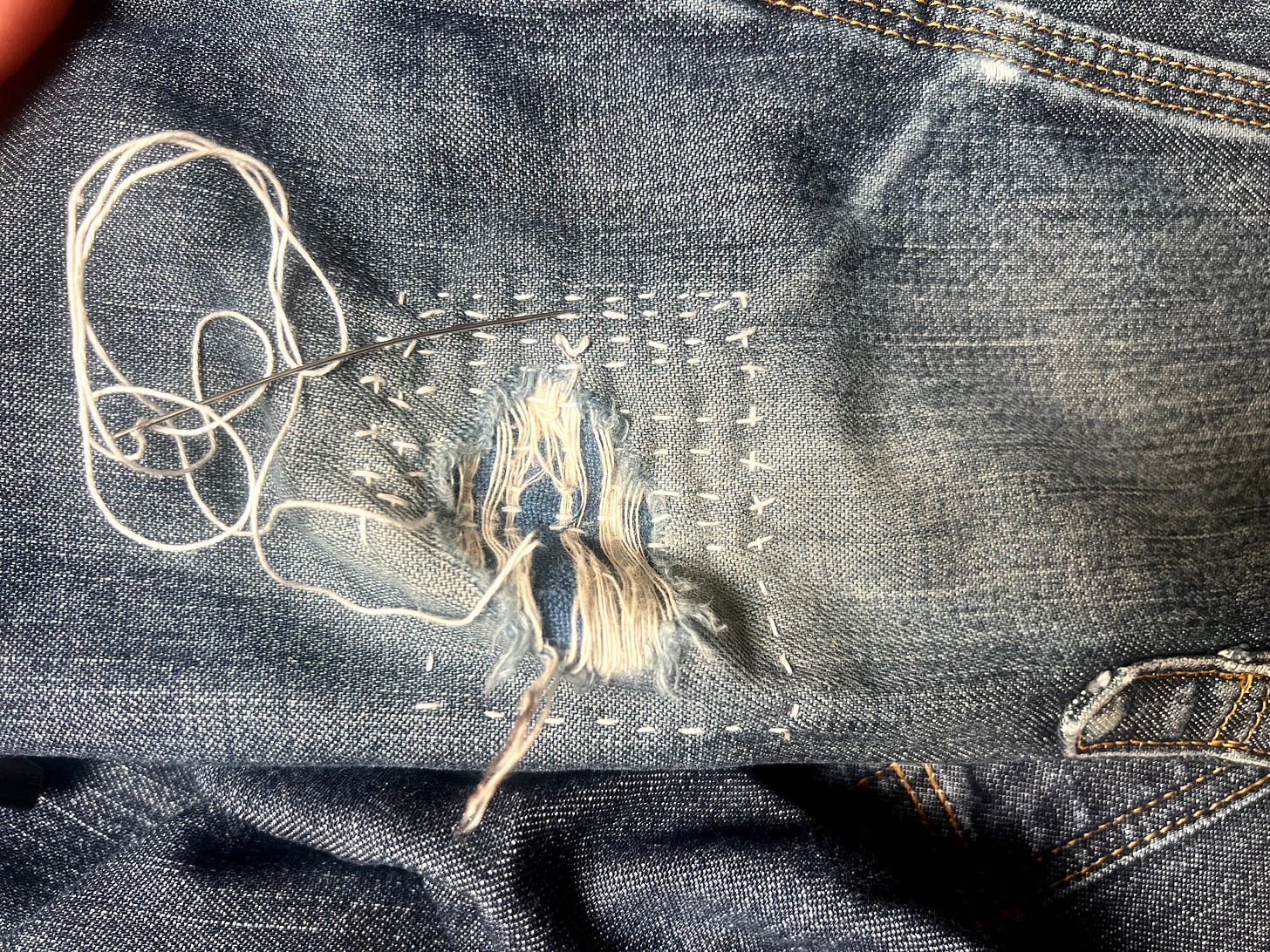

Discover more from Pelican Quilts
Lately I have been sick. One virus after another. Colds that I can’t shake. My body feels fragile as I try to breathe through thick lungs. I am exhausted as I try to nourish myself with a queasy stomach. Something as mundane as a simple cold takes over my life completely for weeks at a time. I recover from one cold and tumble into another. How am I so fragile? Self care becomes another task on my to-do list.
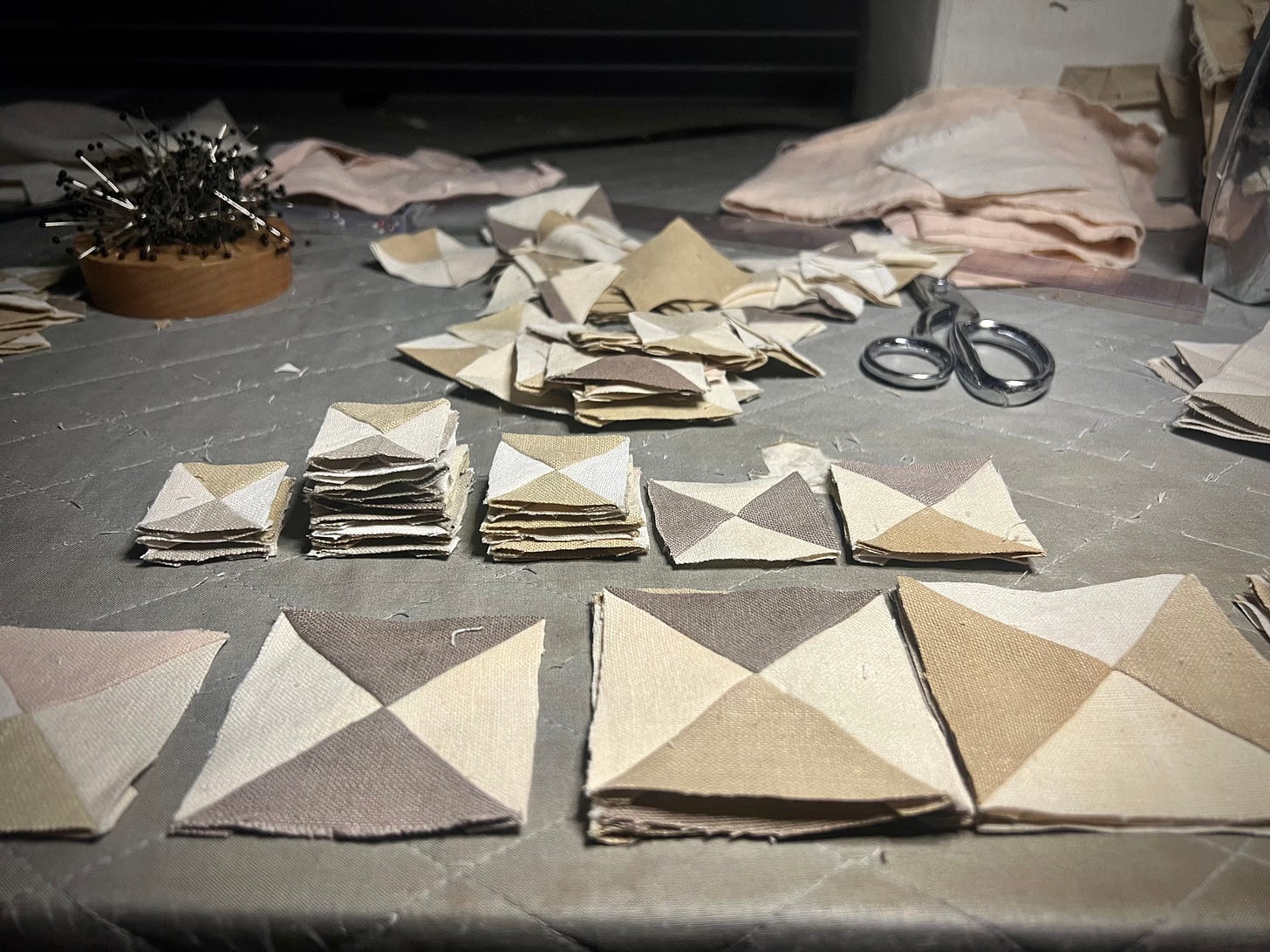
When my dog is sick she has a very different experience from me. When I am sick I don’t feel well PLUS, I worry that I am the kind of person who will be sick all the time. I worry that I have lost my motivation. I fall into an existential crisis. I envy my dog with her simple sicknesses. Being a humans means we have this extra something that slips into even the most simple experiences. Words! Or as Hamlet said, “Words, words, words.” My thoughts and words shift and distort my life.
The psychoanalyst Jacques Lacan thought that when people enter the world of language something happens to us that is unique from other creatures. We have feelings and experiences and then we add words to them. It’s at this moment that something is lost. A word is helpful, but it doesn’t quite express everything we feel. Something is always cut from our experience when it is put into words.
I feel this same way when I design a quilt. I have something in mind but it is more of a feeling than concrete idea. When I complete the quilt, there is always something cut from what I originally had in my mind. This is why I experience a loss when I complete a quilt. Sometimes I even hate my finished piece —at least at first. The loss of the thing that I couldn’t put into the quilt is painful but it serves a purpose.
This cut is part of what it it means to be a person. To have speech. t It is a beautiful thing to have language. Poetry, communication, art, science, and faith all become possible when words get involved. All of these gifts require the use of words - those same words that cut something from what we want say. But even that missing part is a gift. It is this thing, what Lacan called the objet a, or object A, that keeps us always talking. Wanting more. It is the engine of our desire. We cook more interesting foods, write wilder stories, and make new quilts. All to try to express this missing element. The part that is missing from the quilts I finish is what pushes me forward to make another one and then another and another. I am trying to find the part that I can’t ever say.
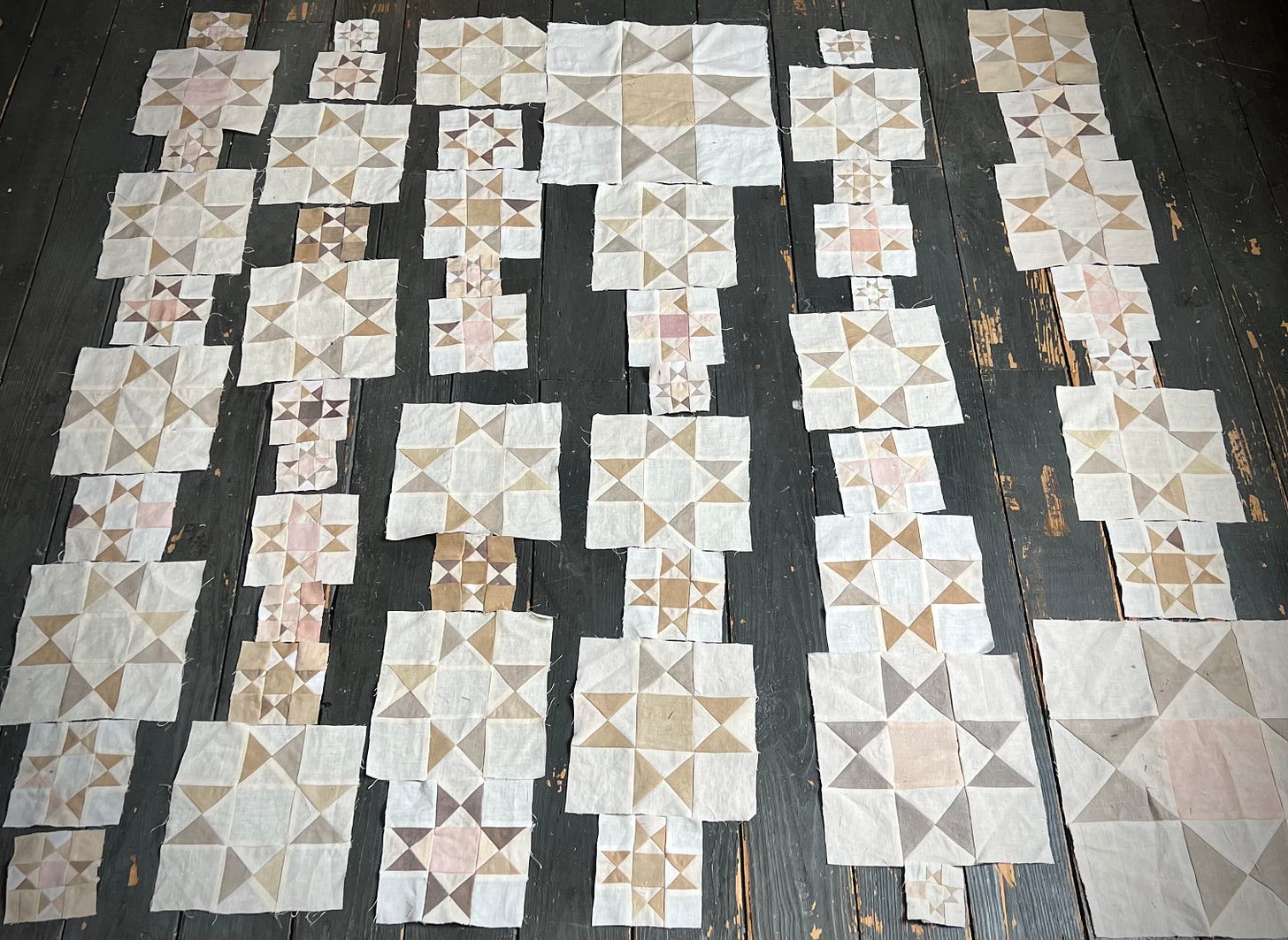
As babies we have experiences that are mirrored back to us with the words our caregivers put around them. Because of this, some of us have a greater loss than others. Some have needs and feelings that are fully rejected or received with violence. Each of us experience the loss that words inflict on us from the very start. Some trauma in our becoming. None of us fully fit into this world of words — and some of us have larger parts of our subjectivity that are left out into the cold, dark expanse of the world without words.
Even though words cut something off for us, they also open us up to beauty. In a quilt, we cut up a perfectly good piece of fabric into small pieces and then sew them back together to make these works of art. The final piece is more fragile than before. The seams never as strong as the original fabric. The beauty comes at a cost of integrity and strength of uncut warp and weft. The cut and the poetry go hand and hand. The fragility and the grace are woven together. We quilt the layers together to gain strength and warmth. To guard us from that fragility. We grow stronger because of our wounds. We are tied together and made dependent on each other.
My body has been mended often. I am pulled and tugged with use and fray at the seams. The quilters seams are a scant 1/4", leaving little grace for wear. I sew my quilting lines close, often under 2" to try to stabilize the fabric. This helps but I must mend every quilts eventually. All this hard wear has a beauty of is own. Eventually all quilts will wear till they are threadbare and can no longer be put to use. This limitation is infuriating.
Oh, to be like my dog, able to be sick without this twist and turn of thoughts. I am attached to the words that our families and our culture puts on me. My mind and body is cut up into pieces by these words. Cut up and pieced back together like the front of a quilt. I am a poem of language and thought, perhaps more fragile than I would be if I wasn’t so cut but hopefully with potential for something even more beautiful than whole cloth.
Our own limits are maddening. Mine drive me batty. this body of mine with all its weak points. Hegel coined a phrase "the spirit in the bone" in his Phenomenology of Spirit. This refers to how the spirt or mind and the body are interconnected. Our mind is bound intrinsically with limitation of the body. Those weaknesses are like groves that we fill with words and meaning. The bone of our skull gives shape to our mind. Not the way that the pseudoscience of phrenology that was popular in the 19th century claimed —that our character and personality traits could be read through the bumps and shape of the skull. This provided an intellectual canvas for racists tie together genetic traits to intelligence that was fully unfounded. Hegel thought phrenologists were useless yet he noticed that they had stumbled on an important insight: the body and the spirit are intertwined. We can’t separate the mind as spirit and the body as biological. The mind and the body are connected.
I find it difficult to think like this — the both-and. I want it to be simple: is my mind or my body sick? Where is the problem? I want to know how to repair the machine and to know my limits are so I can cope. But we have inside us these words that create this complicated kaleidoscope. Our bodies and our minds are quilted together.
When we piece together the top of a quilt we don’t sew the fabric willy nilly. We piece the pieces into a pattern. These beautiful undulations of the pattern add beauty and strength. Can I come to terms with the patterns of my own body? Since the pains and problems of my lump of flesh are part of my soul, I try to work them into a poetry of their own.
While I appreciate it, I have never adopted the practice of visible mending in my own work. I either worked messy and the mend was visible by accident or I worked with patience to mend invisibly. As I am ending my fortieth decade and I look around at the women my age and older I am drawn to the scars and wrinkles, grey hairs and widening hips. The way they draw these into their beauty. My body is frayed at the edges like my quilts will be in forty years. I’m becoming more interested in the ways to mend myself and perhaps even letting it show more - though I will probably always enjoy the art of invisible mending too.
Here is a roundup of a few of my favorite visible mending artists who I follow along on instagram. Many of them have written great books with beautiful illustrations, ideas, and pictures for those of you who want to build a textile and mending library - or if you are like me and just go to the library over and over again to get these texts.
Arounna Khounnoraj, the artist behind Bookhou (@bookhou), is a Toronto-based maker. She combines techniques like embroidery, punch needle, and patchwork to create detailed and beautiful repairs on worn fabric. She is the author of Visible Mending, Embroidery: A Modern Guide to Botanical Embroidery, Punch Needle and more.
Lily Fulop (@mindful_mending) - Her book Wear, Repair, Repurpose and Fulop's Instagram features a variety of creative mends, mixing practicality and playful design.
Celia Pym (@celiapym) - A London-based textile artist with a background in fine arts, Pym uses visible mending as a form of storytelling, connecting each piece to its history. She teaches workshops on mending as a meditative practice. She is the author of On Mending: stories of damage and repair.
Kate Sekules (@visiblemend) - With a punk-inspired approach, Sekules combines her academic focus on material culture with hands-on mending. Mend!: A Refashioning Manual and Manifesto, blends history and ideas about mending with practical tutorials and “mendspiration.”
Flora Collingwood-Norris (@collingwoodnorris) - A knitwear designer from Scotland, she emphasizes sustainable repair techniques in her book Visible Creative Mending for Knitwear.
Erin Lewis-Fitzgerald (@erinlewisfitzgerald) - Known for her book Modern Mending and series #remadebyELF, she creatively refurbishes worn garments and shares her mending diary online.
Katrina Rodabaugh (@katrinarodabaugh) - Author of Mending Matters and Make Thrift Mend, Rodabaugh’s account is a blend of textile artistry and sustainable lifestyle inspiration. She explores natural dyeing alongside mending.
Sashiko Story (@sashikostory) - Keiko and Atsushi, a mother-son duo, bring Japanese sashiko mending to a global audience, preserving traditional techniques. This account brings a critical perspective of how the tradition of Sashiko is used in the trends around visual mending.




